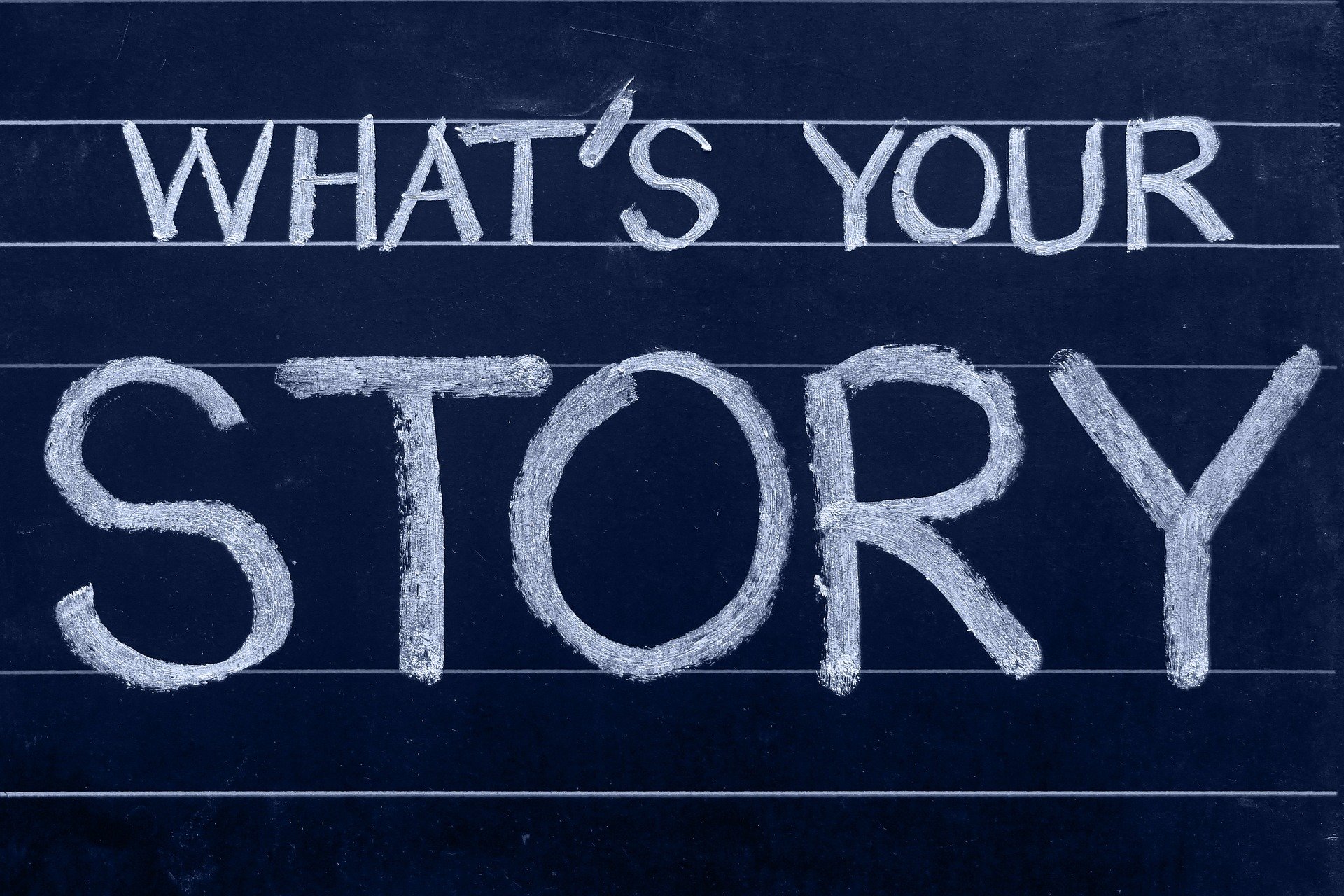It’s all about the story. A story’s premise guides a writer strategically, and a logline interests an audience emotionally. With examples, I’ll show you the writing principles to write a logline for your novel.
What is a Logline?
A logline is a one-to-two-sentence summary, enabling your target audience to envision the entire story. The style and word choices grab attention, making people want to know more.
Writing Principles (Not Rules) Drive the Logline’s Structure
Ask writers to create loglines for the same story, the differences might surprise you. For example, I found these loglines for the Breaking Bad TV series:
- A high school chemistry teacher diagnosed with inoperable lung cancer turns to manufacturing methamphetamine in order to secure his family’s future. (Source: writershelpingwriters.net)
- A chemistry teacher diagnosed with terminal lung cancer teams up with his former student to cook and sell crystal meth in order to provide for his family, his wife, disabled son, and newborn. (Source: thescriptlab.com)
- A terminal diagnosis leads a cash-strapped, loving father* to the hostile world of illicit drug manufacture and its deadly associations. (Source: logline.it) *Note: It’s ironic “a loving father” would enter the deadly world of drugs for cash, yet it’s the irony that captivates viewers.
For instance, look at the differences in these loglines for Finding Nemo:
- A fish must trek across the thing he fears* most, the open ocean, in order to find his kidnapped son before he becomes fish bait. (Source: site no longer available) *Note: It’s ironic the hero must do what he fears the most to save his son.
- When a little fish gets kidnapped by humans, it must break out of the aquarium and find his way back to its parents. (Source: logline.it)
- After his son is captured in the Great Barrier Reef and taken to Sydney, a timid clownfish sets out on a journey to bring him home. (Source: imdb.com)
In my search for logline examples, I came across Rick Polito’s 1998 upside-down interpretation of the logline for the Wizard of Oz:
Transported to a surreal landscape, a young girl kills the first person she meets and then teams up with three strangers to kill again.
Key Principles: Logline word choices and writing styles generate visions and emotions in audiences, and should elicit a tell-me-more response.
How to Write a Logline
Focus on constructing a sentence or two that will produce the tell-me-more response.
Common elements of a logline include:
- Protagonist Type (e.g., a “childless” couple)
- Antagonist Type (e.g., a “jealous” lover)
- Core Conflict (i.e., a problem big enough to sustain audience interest)
- Goal (e.g., the hero’s want conflicts with need)
- Irony (e.g., Nemo’s dad has to face what he fears to save his son)
- Story (i.e., the narrative enables people to envision the entire story)
- Hook (i.e., the wording grabs the target audience’s attention)
My Favorite Logline Template
An internet search will net you templates for constructing loglines. My favorite comes from Blake Snyder, author of Save The Cat! Strikes Back.
Here’s my version of Snyder’s template, which I tweaked by adding where to place the Story Beats (marked in bold):
[On the verge] of [Change], a [Flawed Hero] [Setup] has a [Trigger] and [Thrust Into 2] with the [Story Thread B]; but when the [Midpoint] happens, she [or he] must learn the [Theme], before [Battle 2], to defeat [or stop] the [Flawed Villain] from getting away with her [or his] plan.
In Save The Cat! Strikes Back, Snyder provided this example:
On the verge of a divorce, a bullheaded street-smart cop is trapped in his wife’s office building by terrorists and teams up with a “desk cop” patrolman to thwart them; but when he taunts the terrorists, and risks exposing his hostage wife’s identity, he must learn to adapt to change to outsmart the leader and stop what are really thieves from getting away with a billion-dollar heist. (Film: Die Hard)
Here’s an early logline from one of my works in progress:
On the verge of recovering from his wife and parents’ deaths, a talented but troubled ghostwriter finds evidence of a murder hidden in his client’s notes. He asks a local real estate agent for her help to search for clues, but when they get too close and suspects multiply, the ghostwriter must learn to rely on his faith to save his new love.
Not as elegant as Snyder’s example, so I’ll refine my initial logline during the writing and editing process.
Essential Questions
As you draft your logline, consider these questions:
- Where will the story occur and how will the location influence the hero and villain?
- What about this story world allows the writer to present different sides of interesting moral gray areas?
- How does this world encourage conflicts between the characters?
- Who will serve as the primary protagonist with external problems and internal flaws?
- Who will serve as the worthy opponent of the main character, leveraging moral gray areas?
- What stakes within the hero’s world will create a sense of urgency and importance?
- What about the story’s core problem will cause the hero to feel he or she has no choice but to resolve the challenge?
- How will the story fulfill the promise of the premise?
Key Story Beats
Before writing a logline, I like to create brief summaries of key Story Beats.
Setup:
This sequence of scenes in the stable world establishes the characters, their wants, the stakes, story theme, and the need for change.
- Give hero insights, such as the deaths of his wife and parents.
- Introduce hero as a talented by troubled ghost writer.
Trigger:
A major event disrupts the protagonist’s stable world, stopping hero from continuing as before.
- Hero finds unsettling evidence that his client committed a murder.
Thrust into 2:
The protagonist acts on choices made, thrusting the hero into an unstable world.
- The evidence encourages hero to look for clues.
Midpoint:
The scene shows if the hero is winning or losing, increases the stakes, gives the protagonist insight, and shifts his or her focus from want to need.
- Hero asks the local real estate agent for her help to search for clues.
Plunge into 3:
In this scene, the victory in Battle 1 (end of Act 2B) is reversed, plunging hero into an all-is-lost state (i.e., a looming sense of physical, professional, or psychological death). It’s the hero’s lowest point in the story.
- When hero and love interest get close to identifying the killer, they uncover more suspects.
Battle 2:
Things are different in Battle 2 because the hero has learned the theme, (A) prepares a plan, and then (B) executes the plan. But just when the hero’s victory seems at hand, the villain introduces some twist that upsets the protagonist’s best efforts and hero (C) fails. To keep up the fight, the protagonist (D) regroups and taps an inner strength and boldness. At the end of this sequence, the protagonist feels the outcome’s burden and (E) improvises a new plan.
- The hero must rely on his faith to save his new love.
Climax:
The hero achieves a positive (or negative) result tied to both Story Goal and Need.
- Hero brings the killer to justice. Note: Knowledge of the Climax helps you suggest in the logline what might happen without giving away the ending.
Put the Story Beats to Work
Use the brief summaries of key Story Beats to fill in the logline template:
On the verge of recovering from his wife and parents’ deaths [Change], a talented but troubled ghostwriter [Flawed Hero] [Setup], finds evidence of a murder [Trigger] hidden in his client’s notes [Thrust Into 2]. He asks a local real estate agent [Story Thread B] for her help to search for clues [Midpoint], but when they get too close [Plunge Into 3] and suspects multiply, the ghostwriter must learn to rely on his faith [Theme] to save his new love [Battle 2].
Wrapping Up Writing Principles to Write a Logline
A logline helps you establish and fulfill readers’ expectations.
- Structure your logline to grab your audience’s attention.
- Tell the desired story with captivating images.
- Track whether your writing at key Story Beats lives up to the logline’s promise.
- Adjust your logline as needed during the writing and editing process.
Above all, have fun!
Related Posts
- How to Find the Writing Tools and Self-publishing Apps Writers Need to Satisfy Readers’ Expectations Like the Top Authors
- Self-edit Your Novel (Part 1B)
- What Is Publisher Rocket?
- ProWritingAid Overview
- Scrivener Software Overview
- Get the Free Character Template for Scrivener
- Writing Principles: Meet Author and Blogger Jacqui Murray
- Writing Principles: Overcome the Tyranny of the OR to Achieve Your Writing Goals
Resources
Leave a Reply
In the comments below, share your favorite logline.


Leave a Reply